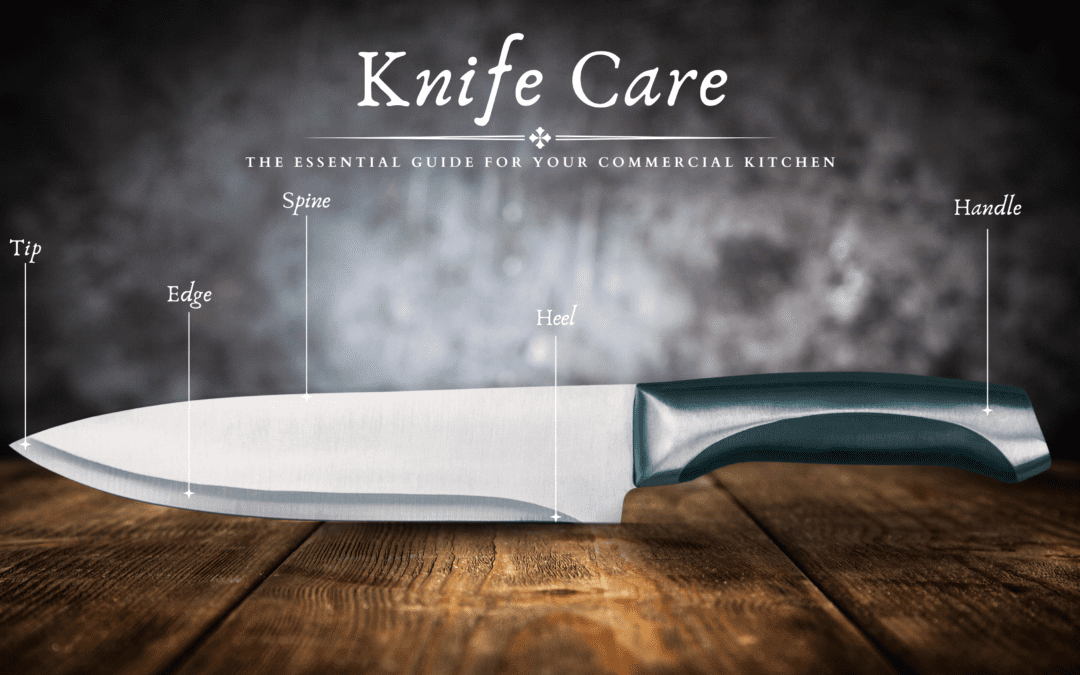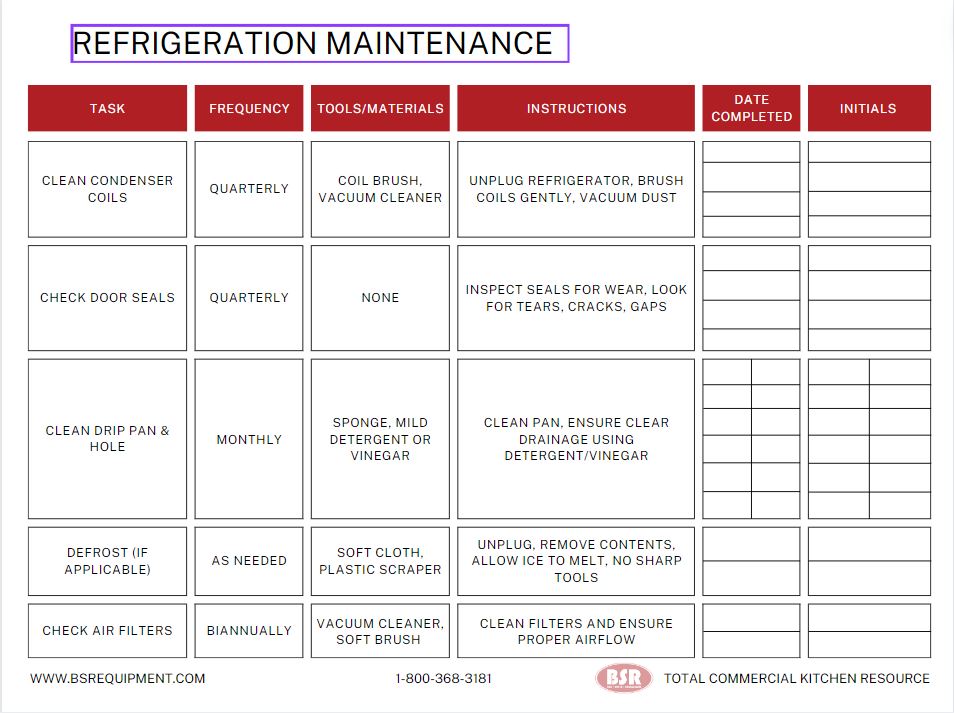Knife Care: The Essential Guide for Your Commercial Kitchen
Introduction
Section 1: Why Blade TLC Matters (Your Knives Aren't Just Tools, They're Investments)
A trusty chef’s knife is more than just a sharpened hunk of metal. It’s an extension of your hand in the kitchen – a precision tool and, when cared for correctly, a culinary companion for years to come. Dedicating a little time to proper knife care might seem like extra effort, but trust us, it pays off in spades:
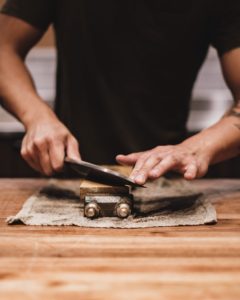
Performance:
A well-maintained knife slices effortlessly, minimizing bruising and preserving delicate ingredients. Think clean cuts of tomato, not sad squishing.
Safety:
A dull blade sounds counterintuitive, but it’s far more dangerous! You need to apply excessive force, increasing the risk of slippage and potential cuts.
Longevity:
Replacements ain’t cheap. Good quality knives, with proper care, can last decades. Those cheap sets get dull quickly and end up as landfill waste.
Food Joy:
Cooking is simply more enjoyable when your tools work with you, not against you. Sharp knives cut down on frustrations and help you enjoy your kitchen time.
Section 2: Knife Anatomy 101 (Understanding Your Blade for Better Care)
It seems obvious, but to truly master knife care, you need to understand what you’re working with. Don’t worry, no full anatomy exam – just the key parts that impact how you use and treat your knives:
The Tip:
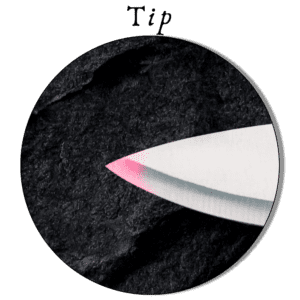
That pointy end! Perfect for delicate precision work, like scoring or piercing. Treat it gently because tips can chip with misuse.
The Edge:
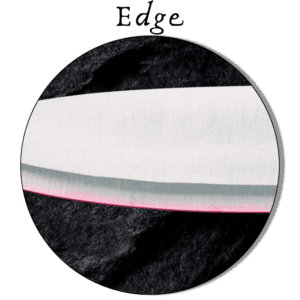
This is the business end, the sharp slicing part. Blade angles and edge types vary widely, affecting what a knife is best used for.
The Spine:
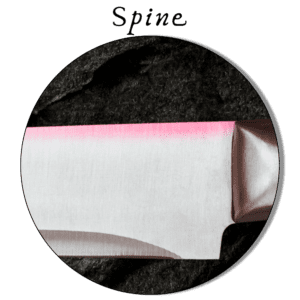
The thick, unsharpened top of the blade. Provides strength and balance, and sometimes has measurements printed on it (handy!).
The Heel:
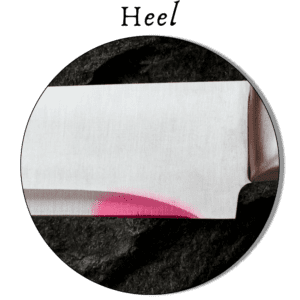
The widest part of the blade near the handle. Built for power cuts through tougher ingredients.
Bolster (on some knives):

Thick junction between blade and handle. This offers protection for your fingers and balance. Not all knives have this.
The Tang:
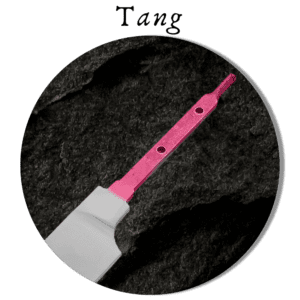
This is the metal of the blade extending into the handle. A “full tang” means it goes the full length for maximum strength.
The Handle:
(Wood, plastic, etc.) Where you grip. Variety is huge! Care will depend on what your knife’s handle is made from.
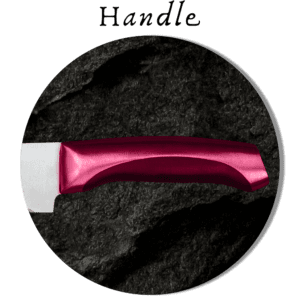
Why Does This Matter?
Cleaning:
You’ll understand why the bolster area needs extra attention to prevent food buildup.
Sharpening:
Blade angles matter depending on your knife’s purpose. We’ll dig into this deep later.
Respecting limits:
A delicate paring knife with a thin tang isn’t built for hacking through bones.
Section 3: Daily Care: Your Knife's Best Practices
You don’t need fancy routines to keep your knives in good shape. These daily habits might seem small, but they make a huge difference in your blade’s performance and lifespan:
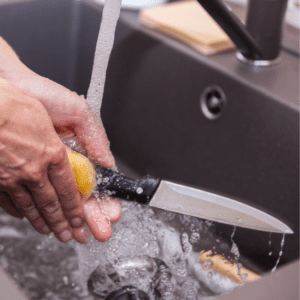
Hand Wash ONLY:
Dishwashers are brutal. The abrasive detergents, rattling around, and heat cycles will degrade your knife’s sharpness and can damage the handle. A little love with warm soapy water and a soft cloth goes a long way.
Dry Immediately:
Leaving a knife wet invites rust, even on stainless steel. Dry with a clean dish towel right after washing, paying close attention to the area where the blade meets the handle.
Don’t Soak:
Letting knives mingle dirty in a sink is a big no-no. It dulls the edge and exposes your blades to potential nicks and dings from other dishes.
Cutting Board Basics:
Cutting directly on hard countertops like granite or ceramic ruins edges fast. Always use wood or plastic cutting boards – your knives and kitchen surfaces will thank you.
No Twisting or Prying:
Knives are for controlled slicing and chopping. Using them to pry open cans or twist apart frozen items puts extreme stress on the blade and risks ruining it.
Proper Storage:
Tossing your knives haphazardly into a crowded drawer spells disaster! Dings and chips lead to quicker dulling and premature rusting. We’ll cover best storage options later.
A Note on Steel: Most blade materials are some variety of steel. Even “stainless” needs the love. Carbon steel is extra reactive, developing a unique patina over time. More on specific steels later.
Section 4: Cleaning Deep Dives (When Soap and Water Isn't Enough)
While your everyday knife care focuses on quick, preventative washes, sometimes more intensive cleaning is needed. Here’s when to deep dive and how to tackle those situations:
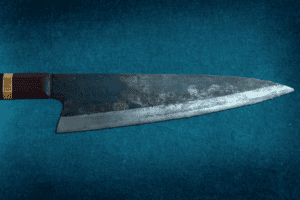
Stuck-On Gunk:
Happens to the best of us! Dried-on dough, caked-on sauces… don’t panic. A little soaking in warm, soapy water usually loosens stubborn debris enough for gentle scrubbing. For super tenacious buildup, a paste of baking soda and water left on the problem area for a few minutes can work wonders.
Stubborn Stains:
Some ingredients, like berries or onions, can leave their mark temporarily. A sprinkle of baking soda with enough lemon juice to form a paste works as a gentle abrasive and a natural lightener for surface stains.
Deep Grime & Rust:
In neglected blades, soaking and gentle scrubbing might not be enough. Bar Keepers Friend (powder form), with its mild oxalic acid, tackles heavy buildup with care. Severe rust might require very fine-grit sandpaper for removal, but this is risky and often necessitates professional services.
Wood Handle Woes:
Wood handles need care beyond the blade. To combat drying out, occasional treatment with food-grade mineral oil keeps them supple. Avoid storing wood-handled knives in extremely damp areas.
A note on disinfecting: Hot water and a good scrub go a long way. If concerned about pathogens (raw meat prep), a diluted bleach solution wiped off immediately is safe on stainless steel but damaging to carbon steel or reactive metals.
Section 5: Honing vs. Sharpening: Your Knives Need Both (But Not at the Same Time)
Knife care can be confusing, especially when you hear “honing” and “sharpening” used almost like they mean the same thing. But there’s a big difference, and understanding it will save your blades – and maybe your fingers too!

Honing: Quick Edge Tune-Up
See a chef swipe their knife along a steel rod? That’s honing. It doesn’t actually remove any metal. Think of your knife’s edge like a row of tiny teeth. With use, these teeth get bent out of alignment. Honing gently pushes them back into place, restoring that satisfying “bite”. Honing is something you can (and should!) do often.
Sharpening: It’s a Grind
Sharpening actually removes a tiny bit of metal from the blade to create a brand new, razor-sharp edge. Over time, honing alone isn’t enough, and that’s when sharpening steps in. Sharpening requires tools like whetstones, specialized electric sharpeners, or the services of a pro.
When to Hone, When to Sharpen: The Fingernail Test
Not sure if your knife is dull or just a little “off”? Try this: very lightly drag the blade’s edge across your fingernail (carefully!). If it slides without catching at all, your knife needs sharpening. If you feel a slight catch, try honing first, then retest.
How Often is Right?
- Honing: You can hone before or after each use for maximum sharpness. It’s quick and extends the time between sharpenings.
- Sharpening: Frequency depends on how often you use your knives and the type of steel. Most home cooks with heavily used knives can get by with 1-2 professional sharpenings per year.
Can I Sharpen My Own Knives?
Technically, yes. But if you want to keep your knives in top shape, there are a few things to keep in mind:
- Whetstone Woes: Sharpening on a whetstone is a skill that takes practice. If you get the angle wrong, you can damage your blade.
- Pull-Through Perils: Those cheap “pull-through” sharpeners you see are tempting but often overly aggressive, shortening your knife’s lifespan.
- Pro-Power: For high-value knives, or if you’re nervous about DIY, a professional sharpening service is the safest bet.
Section 6: Storage Savvy (Protect Your Investment)
How you store your knives matters way more than you might think. It’s about safety, preventing edge damage, and maximizing their lifespan. Here’s what to do (and the mistakes to avoid at all costs)!

The “Don’ts”
The Junk Drawer:
This is your knife’s worst nightmare! Not only is your blade banging around and dulling against who-knows-what, there’s the serious risk of cutting yourself rummaging in there.
Tossing on the Counter:
Edges get nicked, moisture from the air invites rust, and it’s an accident waiting to happen.
The “Do’s”
Magnetic Wall Strip:
Stylish AND useful! Your knives are accessible, dry, and the blades remain pristine with no contact other than the handle.
In-Drawer Block:
If counter space is tight, the slots ensure safety and minimal blade-on-blade action. Just beware of cheap wood that traps moisture.
Knife Rolls/Cases:
Perfect for pros on the move or if you own several showpiece knives. Ensure each knife has its own slot for maximum protection.
Edge Guards:
If the drawer must be your current solution, individual protective sheaths help. Not ideal long-term, but better than nothing!
Additional Notes:
- Humidity Matters: Even stainless steel needs a stable environment. Very humid kitchens might necessitate extra vigilance against rust.
- The “Best” Option: This depends on your kitchen setup and needs. A pro chef with precious knives will have different ideal storage than a home cook with a trusty pair.
Section 7: Telltale Signs (When Your Knife Needs Pro Help)
Even with your newfound dedication to excellent knife care, there are times when it’s best to turn to the professionals for restoration and a razor-sharp edge:

- Severe Nicks and Chips: Sometimes, accidents happen. A dropped knife on a tile floor or hidden bone can cause real damage to the blade. A good sharpening service can often smooth out and restore, extending the blade’s life.
- Warping or Bending: This means the metal itself has lost structural integrity. Unfortunately, not something any kind of sharpening can fix.
- The ‘Try This!’ Test Fails: You’ve washed, honed, and maybe even given a basic sharpening a go and… things still feel dangerously dull. Time for a professional to assess the state of your blade.
- High-Value Knives: Your grandfather’s vintage chef knife or the Japanese blades you splurged on deserve extra TLC. Professionals will use the sharpening method most appropriate for the specific type of steel and edge profile.
- Beyond Your Comfort Zone: Sharpening on whetstones is an acquired skill. If the thought of it intimidates you, there’s absolutely no shame in utilizing skilled sharpeners!
Where to Find Reputable Sharpeners:
- Word of Mouth: Local butchers, culinary programs, or high-end kitchen stores often have good leads.
- Online Search: Look for services that specialize in knife sharpening with transparent pricing. Check if they offer mail-in options (handy if your area is limited).
Final note: Even the best pro sharpening shouldn’t be done weekly. That’s where your day-to-day care and honing skills shine!
